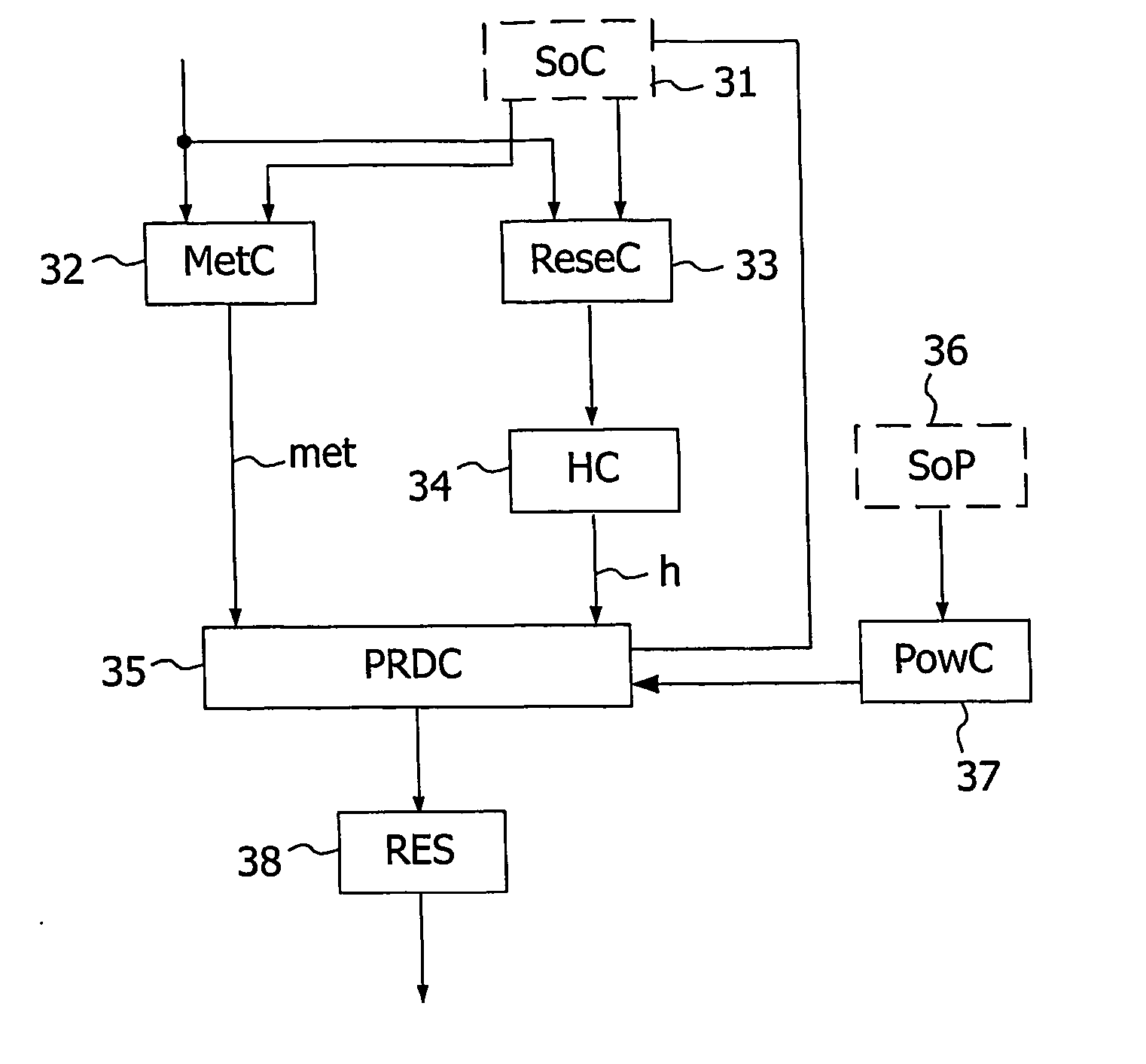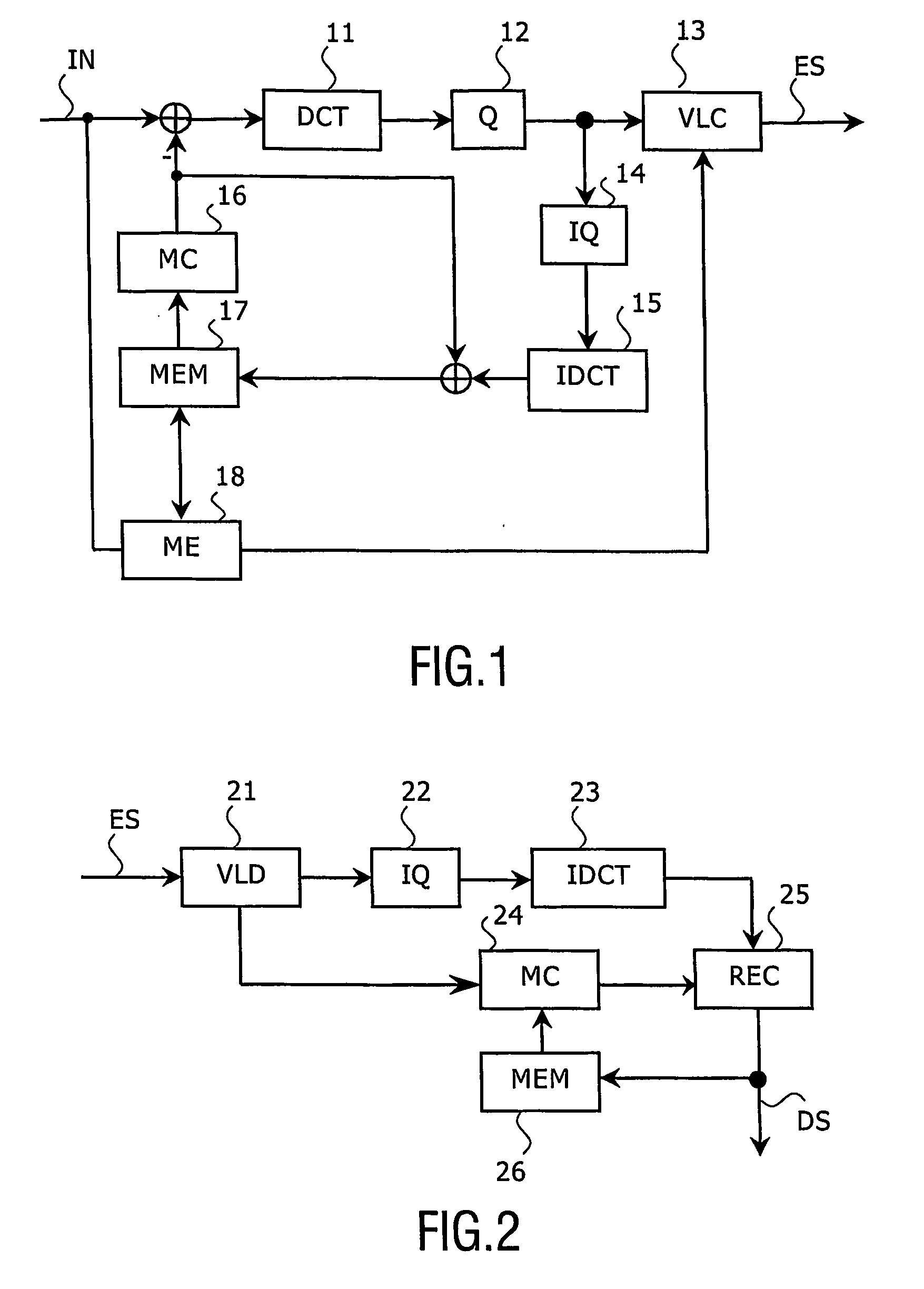Method of encoding for handheld apparatuses
- Summary
- Abstract
- Description
- Claims
- Application Information
AI Technical Summary
Benefits of technology
Problems solved by technology
Method used
Image
Examples
first embodiment
[0077] According to the invention, the estimation step is able to estimate the power consumption of a video decoder for the prediction functions of the set.
[0078] The power-rate-distortion value is then used at the encoder level, in order to reduce the power consumption of the decoder by favoring power-friendly prediction functions.
[0079] The distortion value depends as usual on the entropy h of the residual data, and on the reconstruction error “ove” between the current block and the candidate area. The power consumption required to decode the current prediction function is also taken into account, to increase the overall power-distortion / bit-rate tradeoff at the decoder side. A significant power gain can thus compensate a slight encoding efficiency loss. The distortion value c in accordance with the invention is computed as given below:
c=h+λ1*ove+λ2*powerdecoder(parameters) (2)
[0080] where λ1 and λ2 are weighting factors, powerdecoder ( ) represents the power consumption requ...
second embodiment
[0085] According to the invention, the estimation step is able to estimate the power consumption of a video encoder for a prediction function of the set.
[0086] At the encoder, if all the concurrent prediction functions are computed, it is not possible to save the encoding power consumption. However, a selection of the number of evaluated prediction functions allows the power consumption of the encoder level to be reduced.
[0087] According to the invention, the selection depends on a power-rate-distortion value calculated through a learning stage. This learning stage consists in testing a few pictures with all the prediction functions. The tested pictures can be the first pictures of a sequence of pictures or some pictures just after a scene cut. Indeed, between two scene cuts, it is assumed that a given sequence has stable temporal and spatial characteristics. A learning stage can consequently select the most appropriate prediction functions, in order to avoid testing systematically...
PUM
 Login to View More
Login to View More Abstract
Description
Claims
Application Information
 Login to View More
Login to View More - R&D
- Intellectual Property
- Life Sciences
- Materials
- Tech Scout
- Unparalleled Data Quality
- Higher Quality Content
- 60% Fewer Hallucinations
Browse by: Latest US Patents, China's latest patents, Technical Efficacy Thesaurus, Application Domain, Technology Topic, Popular Technical Reports.
© 2025 PatSnap. All rights reserved.Legal|Privacy policy|Modern Slavery Act Transparency Statement|Sitemap|About US| Contact US: help@patsnap.com



